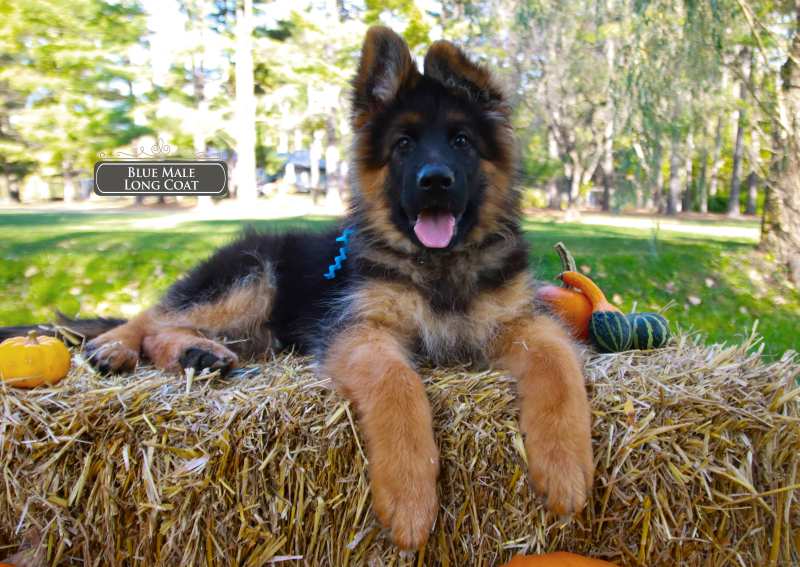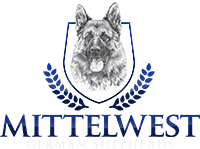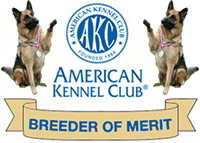TL;DR:
Trained long-haired German Shepherd puppies demonstrate focused obedience, calm social behavior, and emotional stability. Indicators include immediate responses to “sit,” social ease with strangers or other pets, clean coat and ears, consistent potty awareness, and adaptability in new places. Ask breeders about training frequency, early exposure, and reinforcement methods. Beware of common red flags like shyness, aggression, or inconsistent responses. Grooming and basic health checks can reveal training structure as much as behavior.

A trained long‑haired German Shepherd puppy brings structure and presence from day one. They carry a soft, flowing coat alongside calm and confident behavior, with manners already in place.
Knowing what real training looks like before choosing ensures a better match for home life. Behavior that’s intentional, steady, and responsive reveals the quality of early structure and guidance.
Background Of Long‑Haired German Shepherd
To spot training, first understand the breed’s distinct traits. These dogs combine standard Shepherd intelligence with a softer, fuller coat and usually gentler temperament.
Breed & Coat
Long-haired German Shepherds have feathered fur around their ears, legs, and tail. Despite the softness, they’re agile and driven. The coat results from a recessive gene, not a mix.
Temperament
These dogs are calm, loyal, and people-focused. They tend to be less reactive than short-coated types and respond best to clear, consistent training that’s rooted in praise and structure.
Understanding the breed gives context. Trained long‑haired puppies look steady, oriented to people, and comfortable with handling, regardless of coat length.
Key Indicators Of A Trained Puppy
Look beyond commands, behavior tells the real story. Trained pups move, respond, and engage with confidence, not hesitation.
Obedience & Command Response
- Immediate “sit,” “stay,” or “come” without repeats.
- Maintains calm posture and eye contact.
- Doesn’t panic with tone changes or cue volume shifts.
Social Ease
- Approaches new people calmly, without fear.
- Respects boundaries with other pets.
- Doesn’t bark unnecessarily and can be handled gently.
Potty Awareness
- Signals when needing to go outside (door waiting, quiet whine).
- Few or no accidents inside beyond eight weeks.
- Shows some structure in daily routine.
These behaviors reflect early, consistent effort. They’re not automatic; they show training shaped with patience and clarity.
Evaluation Of Training Quality
A strong test is how a puppy behaves away from home. Real training stands up under mild distractions, novel environments, and shifting routines.
Performance In New Settings
Trained pups keep their composure in busy environments. Street noise, strangers, or unfamiliar scents don’t shake them. They stay engaged and follow direction, no matter the setting.
Focus & Engagement
Their eyes stay on the handler, not every passing distraction. When redirected, they quickly refocus. It’s not about being perfect, it’s about being present and responsive.
Energy & Attitude
Training sessions are met with enthusiasm, not fear. These dogs show a wag, a spark, and a desire to get it right. Their willingness reflects a strong bond and a balanced mind.
Training quality reveals itself under pressure. If your pup stays steady and engaged through change, the foundation is stronger.
Questions To Ask Breeders Or Sellers
Be precise in questions, and dig into training consistency. Open‐ended answers may mask superficial care or cursory lessons.
About Commands
- Which commands are introduced and how often?
- Are they practiced in multiple environments?
- Does the puppy respond to handlers beyond the breeder?
Socialization Details
- Have pups met different humans, children, or pets?
- Been around vacuums, horns, doors, and household sounds?
- Do they maintain calm in public or on outings?
Training Philosophy
- Is positive reinforcement used exclusively?
- How are misbehaviors addressed or redirected?
- Is emotional stability prioritized over rote learning?
Honest, methodical breeders encourage questions. Their depth of answer often reflects real training versus surface polish.
Red Flags To Watch For
Charm doesn’t compensate for poor structure. Certain behaviors signal that training foundations might be missing or rushed.
Fear & Avoidance
A puppy that hides, flinches, or avoids eye contact signals poor social exposure. These aren’t minor quirks; they’re early indicators of long-term behavior challenges.
Early Aggression
Snapping or growling, especially without provocation, is not “just puppy stuff.” These behaviors often stem from stress and don’t vanish; they intensify over time.
Disobedient Or Selective Responses
If a pup only listens to one person or needs repeated commands, training hasn’t stuck. True training shows up across voices and settings.
Anxiety In New Spaces
Dogs that tremble, pace, or whine consistently in unfamiliar areas lack foundational exposure. These stress patterns often point to missed socialization during critical stages.
These issues often signal developmental lapses. Behavior grows from how early training and socialization were handled.
Grooming & Coat Condition As Training Indicators
A clean, well‑handled coat shows training and routine discipline. Grooming can be misleading if neglected; it often reveals how early structure translates to care.
Coat & Skin Awareness
Puppies are checked regularly for mats and irritation. They stay relaxed during brushing, and their skin stays clean, soft, and free of buildup under their long coats.
Handling & Hygiene Exposure
They’re introduced early to nail trims and ear cleanings. Calm behavior replaces panic; they stay still and accept touch without resistance or fear.
Groomed Responsibility
Wearing collars and harnesses feels normal. Grooming isn’t a battle. These pups trust the process and the person handling them.
Regular grooming signals comfort with touch and boundaries. It’s not just maintenance, it’s a quiet form of early reinforcement.
Health & Temperament Signs To Observe
Training isn’t just performance; it’s emotional balance and wellness.
Healthy pups trained well show energy, steadiness, and resilience.
Energy & Play Behavior
- Engages playfully, but stops when asked.
- Doesn’t get hyperactive or emotionally unbalanced.
- Knows when to calm and rest.
Physical Health Cues
- Clear eyes, clean ears, and a pink, moist snout.
- Even breathing, solid body condition, and alert movement.
- No limping or uneven gait.
Emotional Calmness
- Tolerates novel situations without meltdown.
- Shows resilience after brief stress (sound, strangers).
- Continues regular eye contact and trainability.
These signs reveal inner strength built by proper early structure. They matter as much as command and response, especially long-term.
Early Training & Socialization Foundations
The most balanced puppies begin early, weeks 3 to 14 matter most. Proper exposure in that window shapes trust, adaptability, and learning readiness.
Critical Exposure Window
Puppies are introduced early to kids, dogs, and all types of surfaces. Every day, sounds like doorbells and vacuums become normal through safe, repeated exposure in a variety of settings.
Routine Skill Building
Basic commands are taught in different environments to reinforce consistency. Name recognition, crate time, and boundary cues are established gently and with structure, not stress.
Positive Reinforcement Focus
Good choices are praised every time. Missteps are redirected, not punished. Training encourages trust and problem-solving, making each pup confident and emotionally grounded.
Curriculum sets the foundation, and emotion matters most. Training that marries exposure with kindness shapes confident adulthood.
Why Mittelwest Breeds, Trains & Supports
Mittelwest German Shepherds isn’t just a breeder; we build training habits from day one. Our puppies receive early exposure, structured routines, and continued support beyond handoff.
Comprehensive Early Training
Our puppies are raised with daily hands-on interaction and guided through sounds, textures, and motion. Obedience begins early and is reinforced across different settings, building strong habits and household awareness.
Thoughtful Socialization Plan
From babies to seniors, our pups meet people of all kinds. Safe trips to parks, yards, and sidewalks ensure they grow confident. Pets, visitors, and noise all become part of their world.
Support That Continues
We help during the first weeks at home and beyond. Whether it’s training refreshers or quick advice, you’re never alone. Mittelwest owners connect, share wins, and support each other over time.

We don’t just place puppies, we raise lifetime companions. Steady training, clear structure, and ongoing attention make the difference.
How To Pick The Right Pup With Confidence
Choosing a trained puppy is more than trusting looks; it’s understanding the background and behavior. Focus on composure, command response, grooming, resilience, and how the breeder supports it all.
Decision Checklist
Look for a pup that resets quickly after distractions, responds consistently to cues, and greets people and dogs with steady confidence. They should accept grooming calmly and show balanced energy and health.
Mittelwest’s Promise
We focus on early structure, positive exposure, and consistency from the start. With honest answers, detailed preparation, and ongoing support, our puppies arrive focused, steady, and ready to become true partners.
Seek cues beyond the surface to find substance beneath. When training is deep, companionship follows naturally and turns into lifelong trust.













